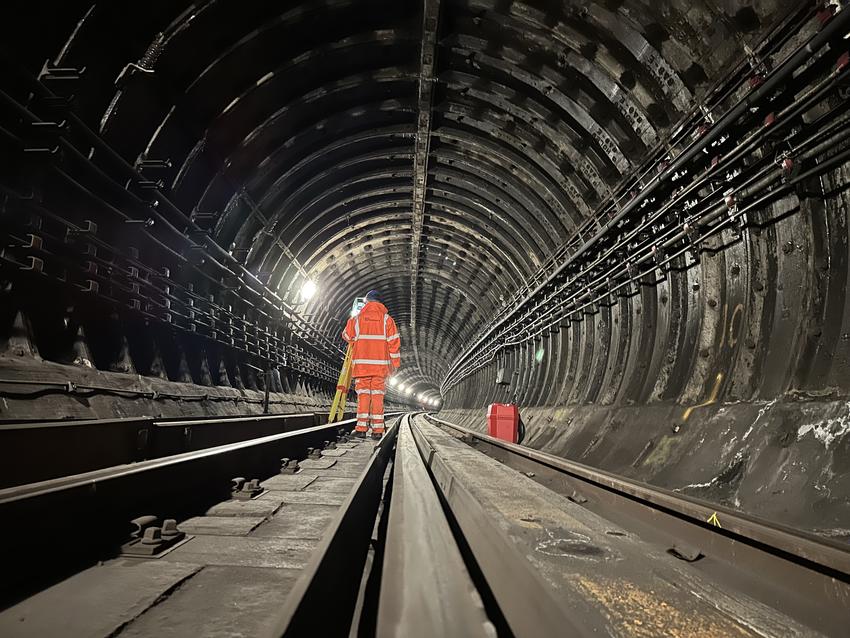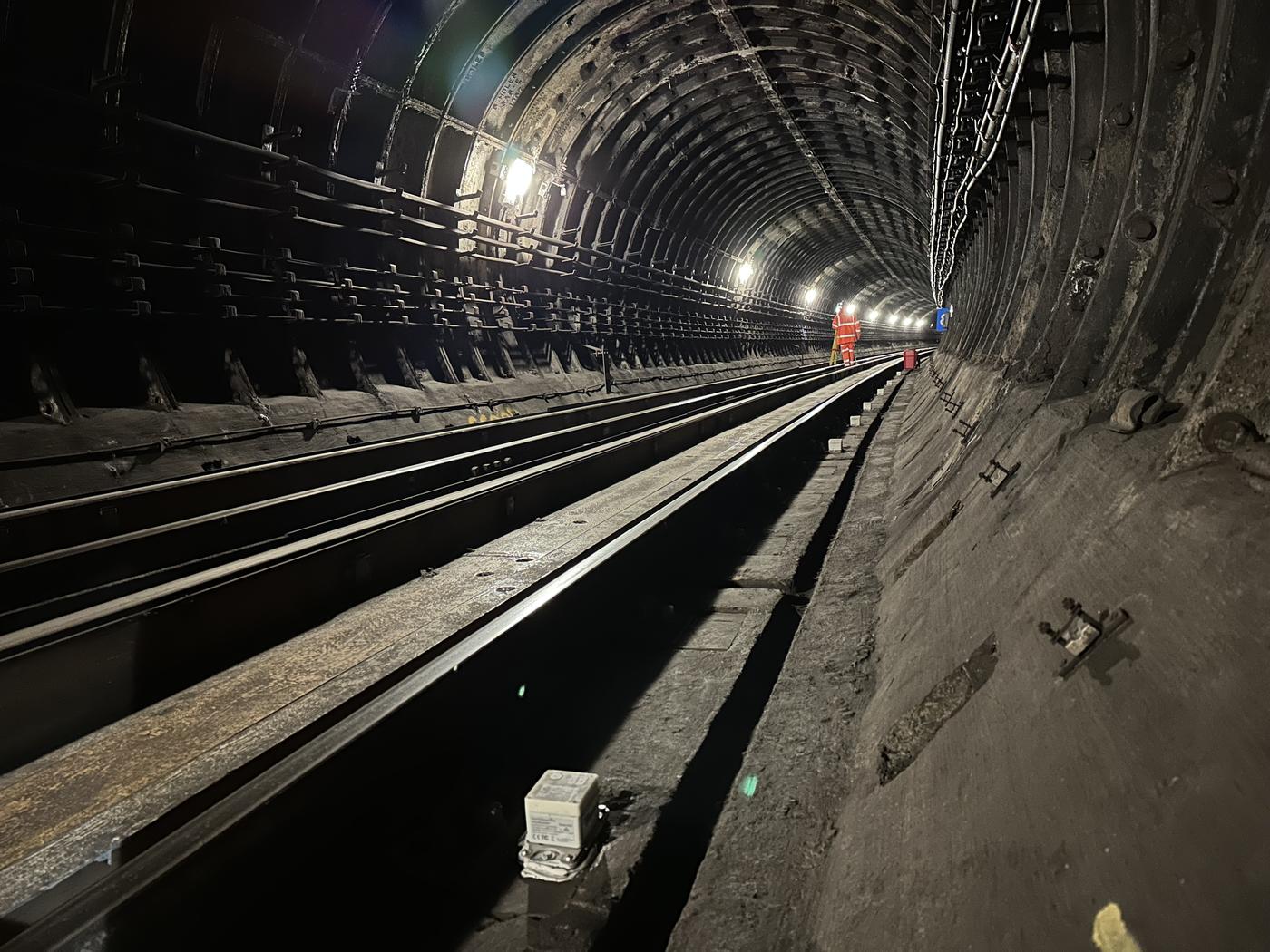Since mid-January GEO-Instruments teams have been undertaking regular surveys on the London Underground Victoria Line tunnels as one of the Tunnel Boring Machines for the LPT2 project passes underneath.
Accessing the tunnels during twice-weekly nightshifts, teams perform track levelling and 3D retro surveys over a 50 metre section of each tunnel.

LPT2 is a project to construct over 30 kilometres of new cable tunnels across South London between Wimbledon and Crayford. It is part of a National Grid project to improve London’s power infrastructure.
The TBM passage required a 6 week period of intensified monitoring in the Victoria Line tunnels.
In order to monitor the 3D movement of the tunnel, Retro reflective targets were placed in arrays on the tunnel ring segments. Easier to install and less obtrusive than prisms, these targets are ideal for this application.
In addition to the manual surveys, 24-hour monitoring is provided by a network of 14 biaxial tiltmeters installed on the track-bed. Data is transmitted wirelessly to a gateway installed in the tunnel and then transferred via mobile data to GEO-Instruments’ QuickView visualisation software.

In December, prior to the TBM interface, engineers installed the tiltmeters and baselined the 3D monitoring and levelling points. Survey teams also performed track trolley and clearance surveys of the approximately 100 metres of track in the areas nearest to the TBM path.
Condition surveys were also undertaken to establish a detailed record of the state of the track features and tunnel rings.
Track trolley surveys accurately measure track geometry at regular intervals. Clearance surveys use an automated profiler mounted onto the track trolley to scan the interior of the tunnel for the position of tunnel features in relation to the track and identify potential obstructions to the train’s kinematic envelope.
A secondary track geometry and condition survey will be taken for comparison after the TBM passage is complete.
Find out more about our experience in tunnel monitoring.